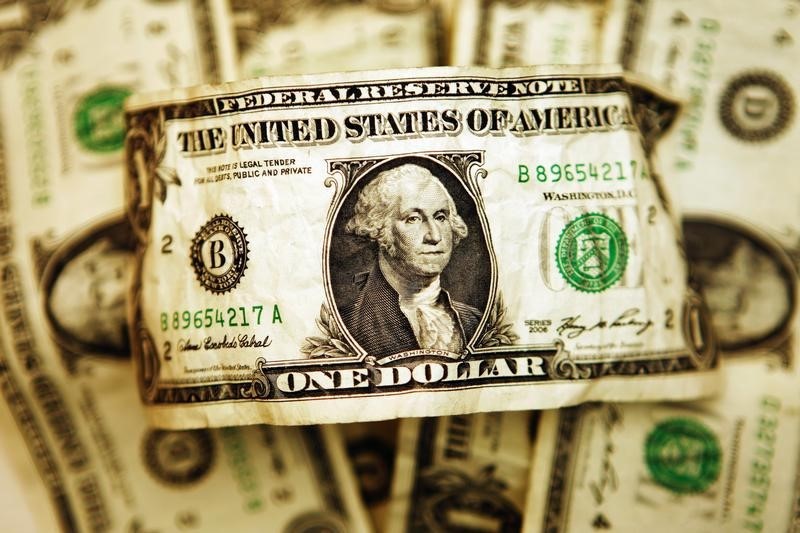 © Reuters.
© Reuters.
Investing.com - The U.S. dollar fell to a more than two-month low in early European trade Monday, adding to last week’s sharp losses on increased expectations that the Federal Reserve has completed its rate-hiking cycle.
At 03:20 ET (07:20 GMT), the Dollar Index, which tracks the greenback against a basket of six other currencies, fell 0.3% to 103.505, just above its lowest level since late August, extending its nearly 2% decline from last week - the sharpest weekly fall since July.
Dollar on back foot
The dollar has been on the back foot for the majority of the last week, after a string of soft labor market and inflation readings saw traders pricing in an even greater chance that the Fed was done raising interest rates, and that the central bank could begin trimming rates by as soon as March next year.
“The dollar's decline has been broad-based, meaning that even the unloved Japanese yen has found a few friends,” said analysts at ING, in a note.
The focus is now largely on the minutes of the Fed’s late-October meeting for more cues on monetary policy, due for release on Tuesday.
“This was the meeting where the Fed retained its tightening bias but included an acknowledgement that tighter financial conditions were doing some of the Fed's work,” ING added. “The market seems in the mood to look out for some dovish headlines here, and this can prove a negative dollar event risk.”
Euro gains despite falling German producer prices
In Europe, EUR/USD rose 0.2% to 1.0926, benefiting from the weak dollar even after German producer prices fell 11.0% on an annual basis in October, helped by a 27.9% yearly fall in energy prices.
This followed on from eurozone consumer prices being confirmed at 2.9% on an annual basis last week, down from 4.3% the previous month.
Yet a number of ECB policymakers have been keen to emphasise the need to keep interest rates at relatively elevated levels as inflation remains high.
"It would be unwise to start cutting interest rates too soon," Bundesbank President Joachim Nagel said in a speech on Friday. "We must not loosen policy until we are absolutely certain of returning to price stability on a lasting basis."
GBP/USD rose 0.3% to 1.2492, near a two-month peak, with Bank of England Governor Andrew Bailey set to speak later in the session.
U.K. CPI plunged to 4.6% on an annual basis in October, from 6.7% in September, the largest fall in the annual CPI rate from one month to the next since April 1992.
However, U.K. inflation remains among the highest in the developed world, and the Bank of England has sought to stress that it is nowhere near cutting interest rates.
Yuan, yen benefit from dollar weakness
In Asia, USD/CNY fell 0.6% to 7.1712, with the yuan climbing to its strongest level against the dollar since early-August.
The People’s Bank of China held its benchmark loan prime rate near record lows on Monday, while also injecting about 80 billion yuan of liquidity into the economy.
Separately, Chinese officials vowed more policy support for the country’s beleaguered property sector - a move that helped shore up confidence over one of China’s biggest industries.
USD/JPY traded 0.8% lower at 148.41, strengthening below the 150 level to the dollar for the first time in nearly three weeks, with traders becoming less fearful of more U.S. rate hikes.

